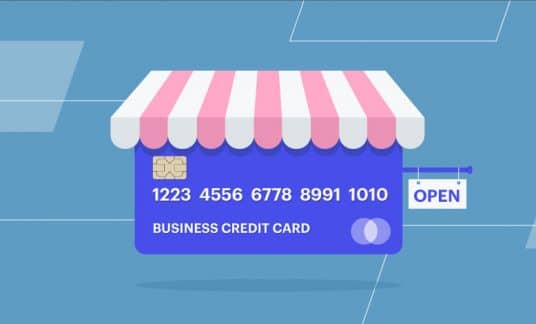You might be able to find loan opportunities within your community if you’re in an area covered by a Community Development Financial Institution (CDFI). Both loans and lines of credit might be available for your business. Let’s take a look at CDFIs, how potential borrowers qualify for financing as well as other local sources for funding your business.
Community Development Financial Institutions
Community Development Financial Institutions — commonly called CDFIs — are private financial institutions that combine investment capital with federal government funding. CDFIs invest money in communities that otherwise wouldn’t receive funds to build businesses or pursue other economic opportunities. A CDFI is one type of community-based finance institution that can help to provide a loan or a line of credit for your small business.
What Is a CDFI?
A CDFI is a private, community-based financial institution that can fund local business initiatives and provide technical assistance. CDFIs are supposed to serve specific geographical areas or populations. Some types of CDFIs also need community representatives as part of their business leadership. There are four main types of CDFI: community development banks, community development credit unions, community development loan funds and community development venture capital funds.
CDFIs can be certified by the U.S. Department of Treasury, although you can find some legitimate CDFIs that aren’t certified. The Treasury Department’s CDFI Fund provides certification to institutions that meet its criteria, which include:
- A primary mission of community development
- Status as a financing business (must provide funds for economic development)
- Service for one or more target markets
- Provision of development services (technical assistance, coaching, training)
- Accountability to the local community
- Non-governmental organizations only
Each of the four types of CDFI has a different emphasis within the Treasury Department’s guidelines for certification. Some people have misconceptions about CDFIs, which is that they are not-for-profit organizations. About 30% of CDFIs are credit unions, and 20% are for-profit banks. CDFIs are as diverse as the communities they serve.

What Financing Does a CDFI Offer?
CDFIs provide financing for businesses in economically under-served areas. Depending on the type of CDFI, you can receive a loan or a line of credit. Some CDFIs guarantee bonds, which provides long-term credit for large-scale projects. CDFIs can also help to refinance high-interest loans to lower interest rates.
Just as banks can provide Small Business Administration (SBA) loans, CDFIs can provide business loans or lines of credit. The New York Federal Reserve Bank surveyed almost 4,000 small businesses that applied for financing from CDFIs in 2016. About 40% of the group had revenue of less than $1 million a year. About 60% had more than $1 million in annual revenue.
Conventional banking lenders turn down up to 80% of small businesses that apply for a business loan. In contrast, 77% of the small businesses in the Federal Reserve’s survey got the funding they applied for from community lenders.
Eight-six percent of the businesses applied for a business loan or a line of credit. About 30% of the businesses applied for a business credit card, and 10% applied for equity investment or trade credit. Less than 10% applied for funds to lease a facility or property.
CDFIs can provide all of these financial products to support small businesses in their target markets.
How Do I Qualify for CDFI Funding?
As a small business owner, you’ll qualify for CDFI funding in the same way as you would qualify for a business line of credit or loans at a non-CDFI institution. You’ll need personal financial statements, business income and profit-and-loss statements, and partnership agreements. You’ll need to document your business assets and liabilities.
The documentation process you’ll go through when applying for CDFI funds is similar to any other lending process; the difference is that CDFIs receive government funding. They have a mission to provide financing to specific communities and people who are economically disadvantaged or under-served. They also tend to offer simple, straightforward loans, from business expansion or equipment loans to lines of credit you could use to buy supplies as you need them.

Finding the Right CDFI
If your business isn’t located in an economically disadvantaged area, you may not have a local CDFI to apply for financing. You can find CDFIs in your area by visiting the CDFI Fund website. You’ll need to directly contact the lending or credit department of the CDFI. Most CDFIs don’t support online loan or line of credit applications.
If your business is located in an urban area, you’ll have the choice of at least two CDFIs. You’ll find that some community lenders serve specific neighborhoods. Visit more than one CDFI and speak to the small business loan officer or representative. They’ll tell you whether or not they can fulfill your business financing needs.
Online Resources
You can learn more about CDFIs by visiting the Department of Treasury’s CDFI Fund website. You’ll find a lot of information there, and not all will apply to your business or needs for funding, because several sections apply to the rules and opportunities for CDFIs. Fortunately, the CDFI Fund website offers a section for business owners seeking funding. By using the program’s search tool, you can get good information about other businesses in your area that have successfully received CDFI funding. Use the information to decide which CDFI in your area could be a good fit for your business financing needs.
You may also find resources through bank websites to learn more about CDFIs and see how much they’ve loaned in a specific area. Some banks have provided funding for CDFIs and maintain information portals to help local businesses get CDFI funding, even if they aren’t qualified for loans or lines of credit from the bank itself. Banks may refer to their CDFI partners as “local loan centers.”
Where to Get a Business Loan: Other Local Financing Options
You can work with small business bankers and advisors to discover other local financing options. You could start by searching online for “small business loans near me” or “where to get a business loan.” Many cities have economic development organizations or neighborhood funding coalitions that can direct you to community lenders. You may also qualify for venture funding, particularly if you’re in a business expansion phase. You can also investigate opportunities for a secured business loan or line of credit with other organizations, such as Fast Capital 360.

Grant Opportunities
Some large businesses — including FedEx, Walmart and Visa — offer grant programs and competitions for innovative small businesses. FedEx offers prizes of up to $50,000 plus business services to 10 small business winners of its annual contest. Walmart’s Community Grant Program offers grants of $250 to $2,500 to small businesses that benefit communities in the area of a Walmart, Sam’s Club or Logistics facility. Corporate grant programs change their award amounts and criteria frequently, so you should always check the program’s website and entry criteria before working on an application. You can work with your local Small Business Administration office or business accelerator to learn about grants sponsored by local business organizations, business schools, or economic development agencies. Entrepreneurs who’ve been successful in raising funds through grant competitions advise you to focus on your business sector and study other successful applicants to learn which appeals are most successful for your type of business.
The Small Business Administration sponsors the Small Business Innovation Research (SBIR) and Small Business Technology Transfer (STTR) Programs. These programs are offered together with 12 different federal agencies, ranging from the Department of Agriculture to the National Science Foundation. SBIR and STTR grants include several phases, from planning to start-up. In 2018, the National Institutes of Health received 6,177 applications for SBIR or STTR funding and made 1,337 awards, a success rate of 21.6%. This only accounts for NIH-related SBIR grants. Eleven other federal agencies also award SBIR/STTR grants. In 2013, the last year reports are available, the success rate for all SBIR Phase 1 (planning) awards was 13%.
What Does CDFI Funding Mean For Your Small Business?
Start-up funding isn’t easy to come by in any business funding scenario. If your small business has operated successfully for at least a year (preferably 2 years) and you have good personal credit, you may find CDFI financing easier to qualify for, with simpler repayment terms and lower interest rates than some other financing alternatives.










